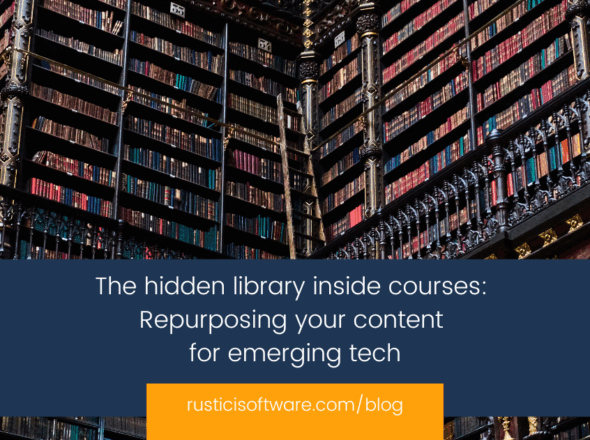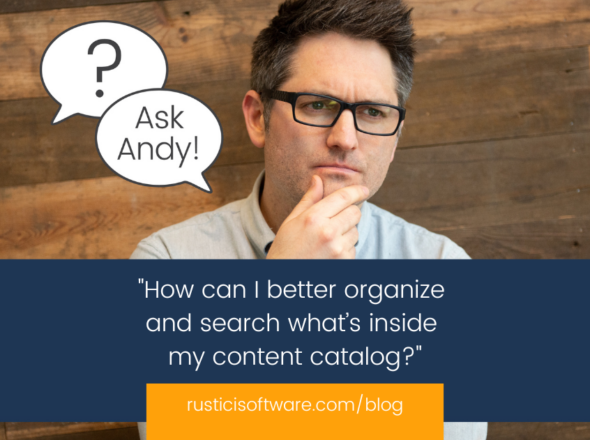This blog post is part of our “Ask Andy” series in which we publish Andy’s plain-spoken, straight-shooting answers to common or uniquely interesting (eLearning) questions. If you have a question, you can always fill out this form and ask Andy too.
Hi Andy,
We’ve been thinking a lot about making our existing training content more accessible, especially through natural language interfaces. We have a large library of SCORM-based training modules, and our goal is to extract as much textual content from these packages as possible. We’re exploring ways to repurpose this content for chatbots and other conversational tools. We came across your offerings and think they might be a great fit. We’d love to learn more!
Thanks,
Engineering Extraction
Dear Engineering Extraction,
Thanks for reaching out! The growing use of chatbots and AI agents in learning catalogs is definitely a trend we’re noticing, and you’re ahead of the game. Many teams struggle with how to source the full course data to feed into their AI models. The biggest challenge is that course content isn’t uniformly formatted when it’s packaged and published for your LMS. It’s not just about the standards – SCORM, cmi5 or others. The way content is structured differs between authoring tools, and there aren’t strict rules on where course content and other pieces of data should live within a packaged eLearning file. That’s why many organizations face difficulties in accessing the data in a precise and accurate way. That’s where Rustici Generator comes in.
Rustici Generator
Rustici Generator is a content processor that parses – or extracts – text, embedded media and other metadata from eLearning packages to help you and your chatbots better understand training. As Generator imports the content, the application walks through the content’s file structure, looking for files and text that contain information that the course intends to communicate to the learner. We’re able to handle a wide variety of possible eLearning course structures with ‘publisher-specific’ parsers, like from Captivate, Articulate and more, that have more rigid expectations for where the critical information is stored in the content package. Once Generator has parsed and stored the text, you can pull that object right into your own LLM or interactive tool so your chatbot can provide more contextual responses.
Whether you’re new to adding AI capabilities or already experimenting with them, extracting accurate course data is a critical step in making your AI truly content-aware. Without that foundational data, your models are running blind. But the good news is you don’t have to build that layer from scratch. Since it is an API-driven product, this allows you to easily connect it to your application and use it in tandem with other Rustici Generator outputs that best support your learners – whether that’s chatbots, recommendations, content tagging or smart search.
Bottom line? Rustici Generator makes it super easy to get the data you need so you can focus on building the cool AI-powered stuff. If you’d like to dive deeper into how Rustici Generator works, let’s chat! You can also sign up for our webinar where we break this down even more.
Best,
Andy


